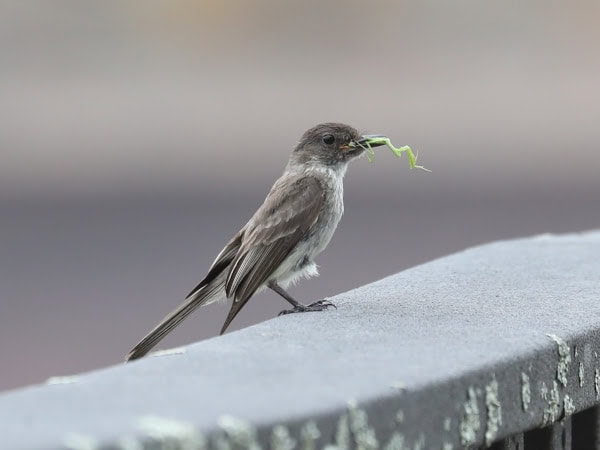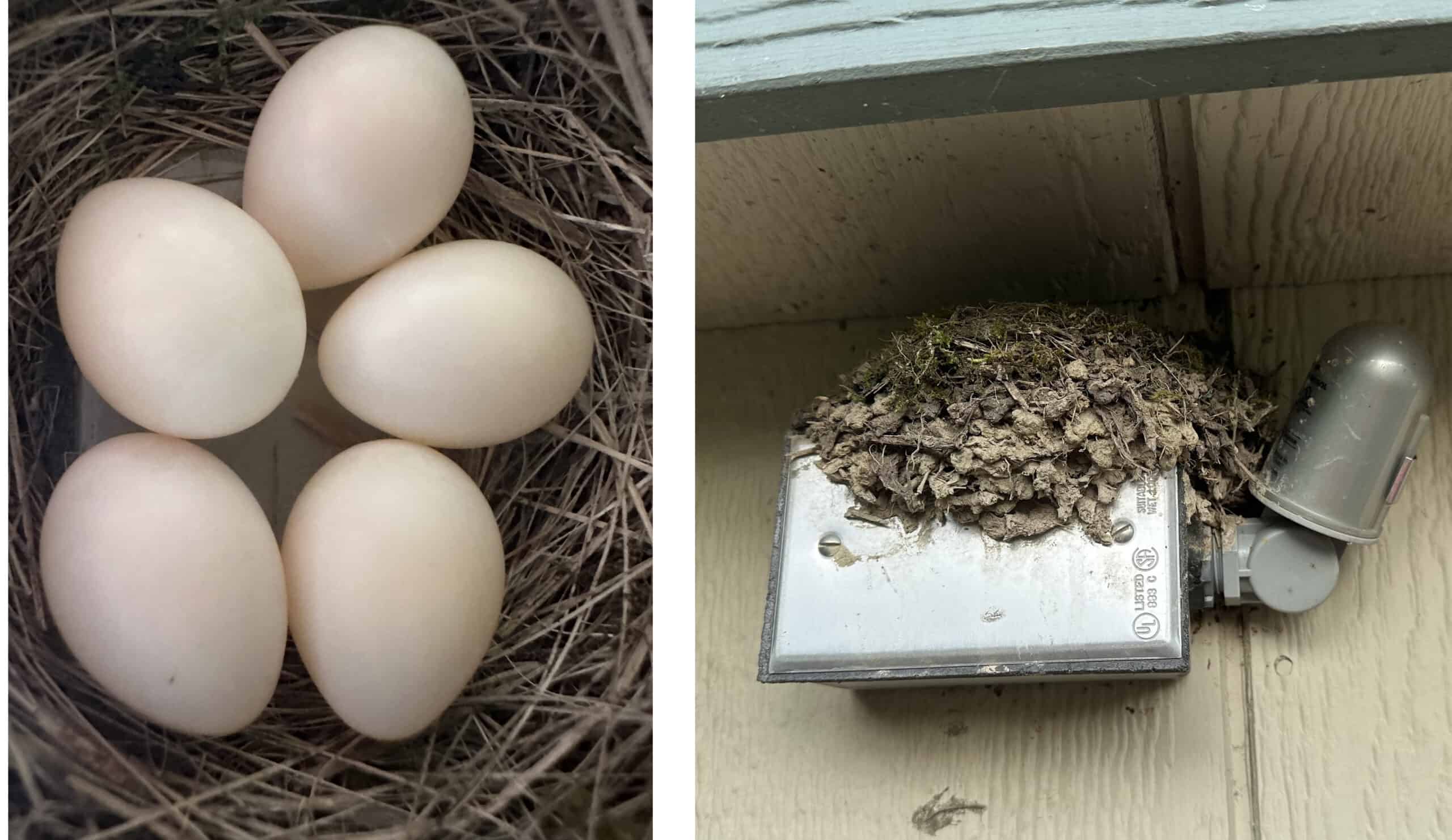Flycatchers and Phoebes
Across North and South America, no family of birds has more species than the 441 species of Tyrant Flycatchers (The Hummingbird Family is in second place with 363 species). The name “tyrant” comes from the aggressive way that many species of flycatchers attack larger birds that enter their territories. Tyrant Flycatchers are found only in the Western Hemisphere, although there are a few other families commonly called flycatchers in other parts of the world, including the Old World Flycatchers and the Monarch Flycatchers.
One of the most common flycatchers in Pennsylvania is the Eastern Phoebe. I photographed the phoebe in the photo above outside the research building at Hawk Mountain Sanctuary. Historically, most phoebes nested on cliff ledges. They have adapted to nest on bridges and on the sides of buildings. I found the phoebe nest in the photo below on the side a storage shed.
Most flycatchers fly far to the south in the winter because Pennsylvania gets so cold that there are few flying insects available. Eastern Phoebes are hardier than most flycatchers. They can survive on fruit when insects are unavailable, so most stay in the southeastern United States during the winter, rather than flying to Central or South America. Here in the Susquehanna Valley, we sit just at the northern edge of the Eastern Phoebe winter range, so you may occasionally see a phoebe in the winter.
Flycatchers and Phoebes
Across North and South America, no family of birds has more species than the 441 species of Tyrant Flycatchers (The Hummingbird Family is in second place with 363 species). The name “tyrant” comes from the aggressive way that many species of flycatchers attack larger birds that enter their territories. Tyrant Flycatchers are found only in the Western Hemisphere, although there are a few other families commonly called flycatchers in other parts of the world, including the Old World Flycatchers and the Monarch Flycatchers.
One of the most common flycatchers in Pennsylvania is the Eastern Phoebe. I photographed the phoebe in the photo above outside the research building at Hawk Mountain Sanctuary. Historically, most phoebes nested on cliff ledges. They have adapted to nest on bridges and on the sides of buildings. I found the phoebe nest in the photo below on the side a storage shed.
Most flycatchers fly far to the south in the winter because Pennsylvania gets so cold that there are few flying insects available. Eastern Phoebes are hardier than most flycatchers. They can survive on fruit when insects are unavailable, so most stay in the southeastern United States during the winter, rather than flying to Central or South America. Here in the Susquehanna Valley, we sit just at the northern edge of the Eastern Phoebe winter range, so you may occasionally see a phoebe in the winter.
About The Author
Dan Hinnebusch is the Ornithologist for Wild Birds Unlimited. Click to learn more.





